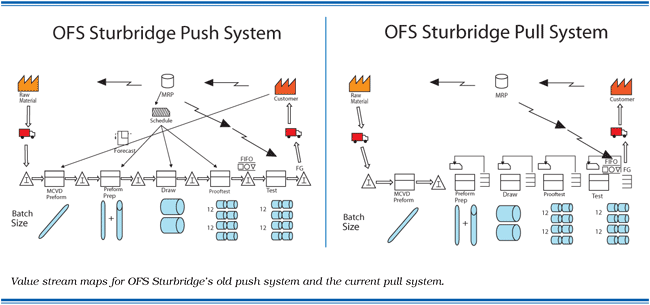Lean Tip #211 - Set aside time for talking with your team about expectations.
You as the leader need not have all the answers. Your role is to ensure that the process for setting the expectations is clear and followed. Involve the people who do the routine work in defining the desired outcomes and the methods by which the results will be accomplished. You and the person(s) accepting the responsibility should build in from the beginning some agreeable method for routinely reporting progress.
Lean Tip #212 - Setting clear employee expectations is a key component in employee performance.
Explain, in detail, what is expected of them. Employee performance management requires that expectations are continually updated and communicated. Communicate what employees can expect from you as the team leader. Inform employees of what colleagues can expect from one another.
Lean Tip #213 - Successful leaders help employees find their full potential and guide them toward desired outcomes.
Keep your focus on the desired outcomes, not on describing each and every step to follow. You as the leader need not have all the answers. Your goal is to guide, not control. Letting individuals find their own route toward productive outcomes encourages them to use their strengths to their fullest potential.
Lean Tip #214 - Ensure your expectations are in alignment with your employees expectations.
Setting clear expectatios is not enough. You must ensure these expectations are cascaded through the organization. Ask your employees to list what they think is expected of them and tell them you will do the same. Compare the two lists to see how effectively you set expectations and how they understand them.
Lean Tip #215 - Good expectations are nothing without the right knowledge, skills, and competencies.
Performance problems may occur when a supervisor and employee lack agreement about expectations or lack the skills to meet the expectation. Expectations are the" know-what" where as skills are the "know-how". Leaders must provide employees the right tools and skills to be successful. Given the changing nature of work assessing the required knowledge, skills, and competencies, and then providing appropriate training and development is critical for good performance.
Lean Tip #216 - Metrics drive behavior, and the wrong metrics drive the wrong behavior.
Direct labor productivity is not a good metric. It doesn't matter whether each worker is producing as much as possible. What matters is whether the plant is producing the amount of product the customer wants. And that is not the same thing. Don't talk about direct labor productivity.
Lean Tip #217 - Without properly focused metrics you won't see performance as it really is or could be.
Management that focuses on the wrong metrics see processes as they think they are. For example, if plant management is totally focussed on shipping dollars, efficiency, utilization, and overhead absorption metrics then they miss reducing cycle time and increasing customer satisfaction. This can lead you to make less than optimal decisions.
Lean tip #218 - It is very difficult to improve something that you fail to measure properly.
Without good performance measurements, it is easy for companies to fall into a very common trap: Employees keep busy with all kinds of activities but achieve few of the desired results. Effective performance measurement is the compass that guides management toward meaningful results at the process level, results that will tie directly with the company's goals
Lean Tip #219 - Metrics should be implemented to influence or regulate our processes and our actions.
If what you measure doesn't change behavior or enable you to make a decision, why are you bothering to measure it? The best metrics are those that impact our processes. Yet you would be surprised how few of the metrics affect the things we do.
Lean Tip #220 - Focus on proactive metrics that measure the right things.
The overwhelming bulk of metrics are what I call "comfort metrics." They tell us, or our bosses, that we have done a good job. But our focus should be on proactive metrics - that is, the right metrics. That means that the right person sees the right metric at the right time so that he or she can take the right action to achieve the right result.
Lean Tip #221 - Continuous Learning Creates Endless Opportunities
A constant quest for learning provides the means to always be moving forward, to conquer new frontiers and achieve new and exciting goals. Make a point to learn something new every day. Learning new things brings more exciting experiences your way. It allows you to meet other people who can bring further knowledge or learning opportunities.
Lean Tip #222 - Set Learning Goals to Further Your Knowledge
We usually set goals for the year around performance at work or weight loss/exercise at home. You should also set goals around learning. Try to learn a new skill every year. By creating a plan for learning and measuring your progress you can be sure to achieve the goal. This will create a continuous learning cycle.
Lean Tip #223 - Continuous Learning Isn't Possible Without Practice and Experimentation
Continuous learning requires two elements to be truly successful overtime:
PRACTICE: After completing a learning experience, create opportunities to apply what you learned as soon as possible and many times to refine your ability.
EXPERIMENT: Take a risk and try something new, even if you aren’t all that comfortable. We can learn as much,sometimes more, from our mistakes than from getting it right the first time.
Lean Tip# 224 - One of the best ways to learn is to teach or coach someone else
One of the best ways to learn is to teach or coach someone else. Most trainers will tell you that they
learned a lot more from teaching than from taking courses themselves. Share what you are learning with a coworker; offer to coach someone who is learning a new skill; agree to do deliver a workshop.
Try blogging - this has been a truly remarkable learning experience.
Lean Tip #225 -Successful Companies Build a Learning Organization
Learning is the key to success—some would even say survival—in today’s organizations. Knowledge should be continuously enriched through both internal and external learning. For this to happen, it is necessary to support and energize organization, people, knowledge, and technology for learning. A learning organization values the role that learning can play in developing organizational effectiveness.






